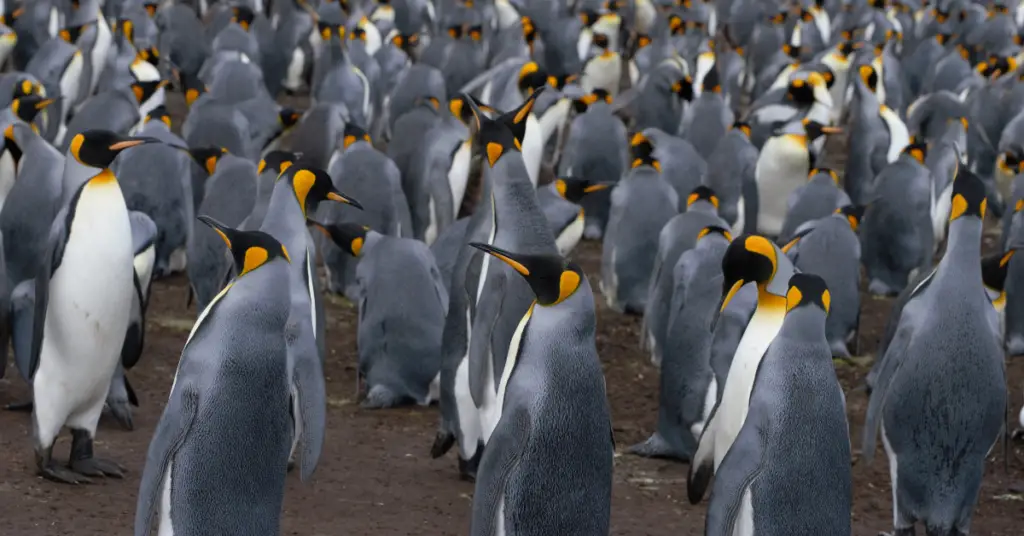We can think of a population as a set of individuals of the same species living together at the same time and place. This statement implies coexistence and possible interaction or intercommunication between all members of the population, and that the population is spatially well defined.
Population Dynamics; How fast the population is growing, how large it is, what influences its growth is a field of study called population ecology. Population ecology is the study of populations in relation to the environment, including environmental influences on population density and distribution, population size and age structure..
Populations are limited in their ability to grow by their resources; The maximum population abundance (for a given species) that an environment can sustain is called its carrying capacity. A population can decline due to a lack of resources, or it can decline because it is being hunted by another species that is increasing in numbers.
A population is a group of individuals of the same species living in the same general area. Members of a population rely on the same resources, are influenced by similar environmental factors, and have a high probability of interacting and reproducing with each other.
Ecologists use several terms when understanding and analyzing populations of organisms. A population is a type of species that lives in a specific location.
Population size represents the total number of individuals in a habitat. Population density represents how many people live in a given area.
The population size is represented by the letter N and corresponds to the total number of individuals in a population. The larger a population, the greater its genetic variation and thus it’s potential for long-term survival. However, increasing population size can lead to other problems, such as resource overexploitation leading to demographic collapse.
Population density refers to the number of people in a given area. A low-density area would have more scattered organisms. In areas of high population density, more people would live closer together, leading to more competition for resources.
Population Dispersion; Provides useful information about how species interact with each other. Researchers can learn more about populations by examining how they are distributed or distributed.
Population distribution describes how individuals of a species are spread out, whether they live in close
proximity to each other or far apart, or clustered into groups.
Uniform dispersal refers to organisms living in a given territory. One example would be penguins. Penguins live in territories, and within these territories, the birds are relatively evenly distributed.
Random dispersal refers to the spread of individuals such as wind-dispersed seeds, which fall randomly after traveling.
Clustered or clumped dispersion refers to for example a drop of seeds to the ground, or to groups of animals living together, such as herds or schools. Schools of the fish exhibit this mode of dispersal.
Although borders are often drawn quite arbitrarily, ideally they should encompass a specific population unit. Members of a population can interact in a variety of ways.
They may cooperate in certain activities such as hunting or nest building. At other times, they may compete with each other for essential resources, such as food or space, mate with each other to reproduce new individuals. As a result of these interactions, new individuals are born into the population while others are lost.
The environment surrounding populations provides them with resources such as food and shelter, as well as pressures from predators, parasites, and competition with other types of organisms Immigrants may also enter from other nearby populations or individuals may emigrate out of the population.
In order to reduce the number of calculations, we often assume that all members have equal opportunity to interact between them and, in doing so, produce births (birth rate), deaths (mortality), and migrations, which are characteristic of this particular population.
These characteristic processes will be determined by the average properties of the limbs and the environment in which they live and their functioning will lead to changes in the state of certain variables of the population. Individual average properties, acting together with the environment, control the processes of population change which, in turn, affect certain variables of the state of the population, such as density, spatial arrangement, age distribution, or the frequency of certain genes.

Erzsebet Frey (Eli Frey) is an ecologist and online entrepreneur with a Master of Science in Ecology from the University of Belgrade. Originally from Serbia, she has lived in Sri Lanka since 2017. Eli has worked internationally in countries like Oman, Brazil, Germany, and Sri Lanka. In 2018, she expanded into SEO and blogging, completing courses from UC Davis and Edinburgh. Eli has founded multiple websites focused on biology, ecology, environmental science, sustainable and simple living, and outdoor activities. She enjoys creating nature and simple living videos on YouTube and participates in speleology, diving, and hiking.

